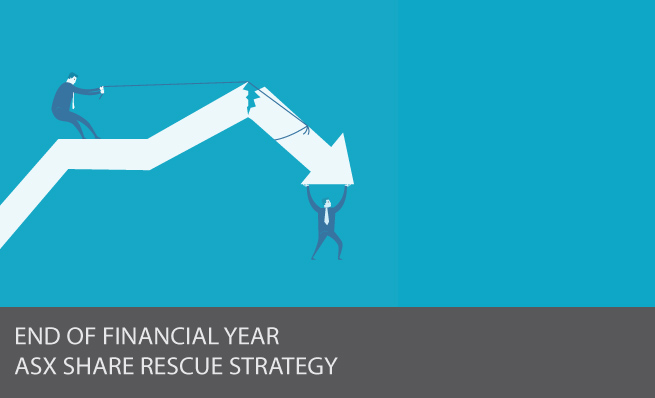
If you own shares that are worth less than what you paid, you really need to read this: With the end of the Australian Financial Year, June 30th, just around the corner, many investors are looking to get the most out of the opportunity it presents for gaining benefit right now.
And if you are currently holding shares on the ASX that are lower than the price you have purchased them, there are some steps you need to take to turn a bad situation into potentially a profitable one.
Making some solid decisions now, and there is a time limit to June 30th for them to be made, can make a material difference to you, financially, as you are about to see.
Real world Case Study – More Common Problem than you might think, and that could help you right now
A couple of days ago, we had a meeting with new clients. Their previous broker had recently gone into administration, and they had some problem stocks. Now, what I mean by problem stocks is pretty common.
The Rescue Strategy to apply to any of your losing shares on the ASX
Use your poor performing shares to optimise your return
Are you holding shares worth a lot less than what you paid for them?
Maybe a few of you? One of our fundamental rules is to always use a stop loss on every trade. The basis for this is of course to manage out some of the risk and prevent those big, nasty, blow out trades that can undo a year’s worth of good work.
Sadly, for these clients, they were left feeling humiliated and financially worse off by having a previous broker who talked them out of using stops… “Take the long terms view, she’ll be right!” being the focus of the advice they had been given.
In their initial view, they thought they were long term investors – buying and holding, or hoping would be a fair statement. After all, that is what they were told – invest for the long term.
Now don’t get me wrong, creating wealth is a long term game with slow and steady winning the race, so were aren’t talking about becoming day traders here!! Quite the opposite.
In fact, the past year has seen one investment approach become increasingly mainstream – because it has worked!
The major shift for successful investors is away from being passive or active, the smart money is now on “Proactive Investing”
As you probably know, in recent years, long term returns have been skewed toward the negative – BHP Billiton Ltd. (BHP) for example, is retesting its 2008 lows and is down 40% from its highs – and that is against a backdrop of the biggest ever mining boom. Alternatively, the National Australia Bank (NAB), again down heavily in the past couple months, also now trading below its 2008 levels. This is typical passive investing and it has failed, leaving many investors, particularly retirees strapped for cash.
These moves have left long term investors shattered by poor performance – and not even a fully franked dividend can hide this sort of disaster.
So what can be done to get some momentum into your investing and, perhaps have things moving forwards, not backward?
The reality is, plenty and it is probably a bit easier than you may think!
Proactive Investing looks to take advantage of opportunities and profit from them. The end of the financial year is just one such opportunity that you should be taking advantage of.
So whether you are holding Fortescue Metals Group Ltd, BHP, the Banks, or anything else, there are strategies that you can apply, right now, that can help you out of the hole.
Strategies to apply to any of your losing shares, and get an immediate benefit
By the end of the meeting, we went through and discussed a fix it strategy, which met with their approval.
The Rescue Strategy to apply to any of your losing shares on the ASX
Use your poor performing shares to optimise your return
This Proactive Investing approach will give great upside potential, and more importantly, with downside risk managed
A few of the highlights of the strategy include:
- Gaining an immediate tax benefit on your losses
- Remove the bulk of your money out of the underperformers, reducing your exposure to risk and the emotional damage
- But still retaining the upside if the stock recovers
- Having only a very limited, guaranteed amount at risk
- How to take some further simple steps that will reduce risk even more
- Freeing up cash, opening the door to invest into more positive opportunities, while avoiding holding on to problem stocks
You see, making a decision to do something, is almost always better than doing nothing, and simply hoping that something might change. The question is, how can this strategy help you?
Now I hate to be alarmist, but being paralysed by fear and doing nothing can be a financial death sentence, yet can be easily avoided.
So if you are holding onto stocks that are currently underwater; are open to learning something new, or want to get more out of a bad situation, click here and check out this Passive Investor strategy.

